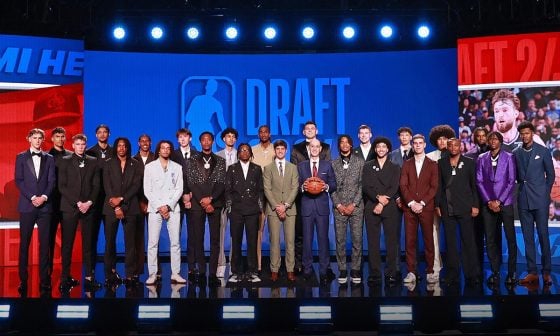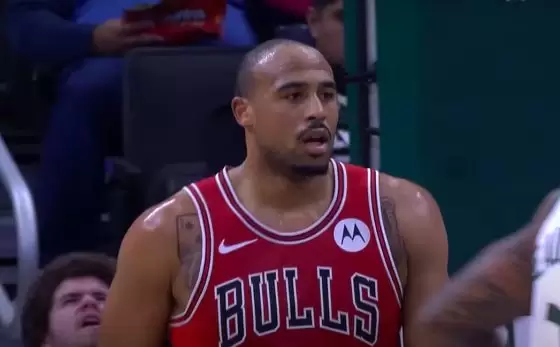Cast your mind back to the early months of the season, when the Boston Celtics were dominating on the offensive end and playing one of the most aesthetically pleasing styles of basketball in the NBA.
Players were cutting without the ball. The rock was oftentimes made to be the fastest player on the floor, and the shots the Celtics generated weren’t just wide-open; they were all within the flow of the offense and designed to punish a defender for ever attempting to help off on the perimeter.
Those early games were based on having a five-out offensive system (all players positioned around the perimeter) with a rotation of players who could all handle the ball, create for themselves and/or others, score on multiple levels, and create mismatches with screening actions while playing at pace.
Yes, the defense was porous at times, but the Celtics came into every game looking like they could outscore the opposition and played with a swagger that came from understanding their talent and depth could match up with the best the NBA had to offer.
However, since the return of Robert Williams, Boston has gone back to playing with a double-big lineup, where they often operate with a ‘four out, one in’ design, placing Williams in the dunker spot. Theoretically, this shouldn’t be a problem. Williams provides vertical spacing and can step out to the perimeter and operate as a pivot point for the team’s ball movement.
Yet, by sliding Williams back into the starting five, Boston gave up one of their ball-handlers, and the balance of their offensive movements had to change. Suddenly, teams could feel comfortable sending a double, or a hard hedge toward a ball-handler, knowing that their low helpline defense can rotate over to tag Williams roll or pick up his relocation, and that fluid movement we had become accustomed to slowly started to freeze over.
What’s interesting is that out of Boston’s five most-used lineups that boast a positive points differential, only one of them contains a double-big tandem, with the rotation of Derrick White, Jaylen Brown, Jayson Tatum, Al Horford, and Robert Williams registering a +46 over 138 possessions (just enough to quantify a per 100 statistic).
The other lineups feature either Tatum or Grant Williams at the 4, both of whom are not what we would classify as a big in the general sense. According to the Cleaning The Glass, the lineup of Marcus Smart, White, Brown, Tatum, and Horford is the one Mazzulla has used the most, accounting for 662 possessions throughout the season and amassing an impressive +13.2 point differential in the process.
With Robert Williams currently sidelined due to injury, the Celtics have started to give teams more looks at their five-out lineup from earlier this season, and for the most part, we’ve begun to see signs of the impact it can make. When you look at how the team performed against the Portland Trail Blazers on Wednesday night, you can see that they were penetrating more, hunting paint touches, and moving without the ball, all while throwing different screening looks at the Blazers’ defense.
In the above play, we can see the Celtics go to Derrick White as an inverted screen and roll man, where the guard sets a ball screen for Tatum before slipping into a short-roll, engaging the Blazers’ low defense before redirecting the rock to Horford who is left unchecked on the low post.
Guarding these types of actions is incredibly difficult, especially when teams are trying to shut down a star scorer and the inverted action takes them by surprise. This season, White is converting 65% of his looks around the rim and 44% in the short mid-range (which I term as the floater area) which ensures the defense has to step up to challenge him in the paint.
Herein lies the benefit of moving away from a double-big lineup. The Celtics as currently constructed are a nightmare matchup when sticking to a single big man playing above the perimeter — they can run delay actions, their stagger screen series is more fluid, and defenses can’t cheat off their man, put simply, they’re a nightmare to defend and contain.
Sure, if you’re facing off against the Joel Embiids, Nikola Jokics, or Cleveland Cavaliers of the world, then by all means, throw two bigs onto the floor and make life difficult for them. Yet, as we’ve seen on so many occasions this season, there’s value in having a multitude of decision-makers sharing the court and letting them operate with a certain amount of autonomy in a read-and-read system.
Mazzulla started this season with his own style of play, his own system, and a new set of offensive principles, but recently, it feels like he’s trying to create a hybrid from Ime Udoka’s Celtics and his own, and for the most part, it’s been a clunky mess. Maybe now is the time to go back to what worked for the final few weeks of the season, and start rebuilding a genuine identity on the offensive side of the floor before the playoffs roll when every game starts to carry extra weight.






